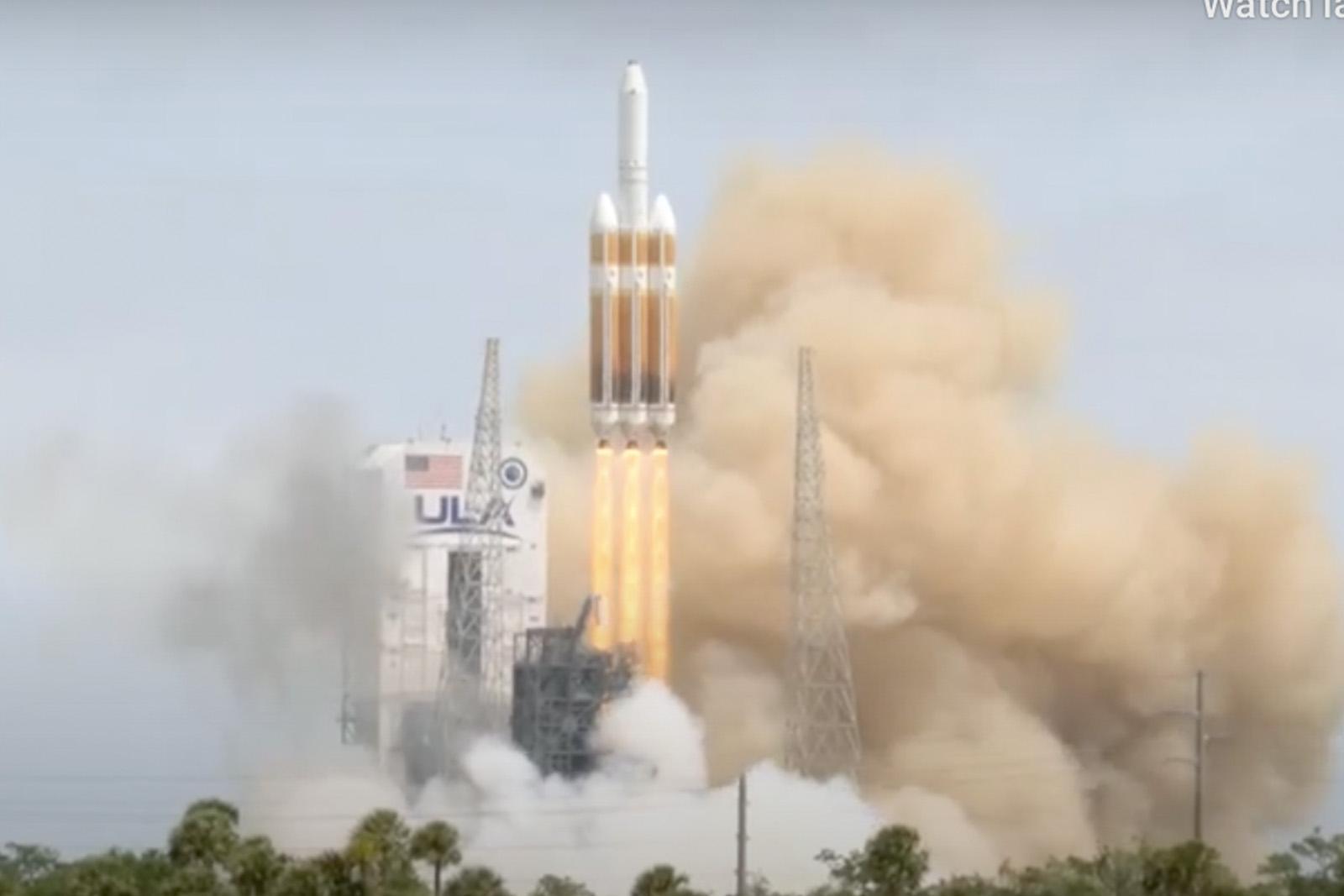
The last Delta IV Heavy rocket lifted off from Cape Canaveral SFS on April 9 on a mission for the National Reconnaissance Office (NRO), marking not only the end of what was once the heaviest-lift U.S. expendable rocket, but also the final flight for the entire 63-year-old Delta family of launch vehicles.
“This is a bittersweet moment for us,” United Launch Alliance (ULA) CEO Tory Bruno told reporters during a prelaunch press conference on March 27.
“This is such an amazing piece of technology—23 stories tall, a half-million gallons of propellant, 2.25 million lb. of thrust and the most metal of all rockets, setting itself on fire before it goes to space. Retiring it is obviously the future [and] moving to Vulcan, a less-expensive, higher-performance rocket, but still sad,” Bruno said.
ULA had hoped to launch the 16th and final Delta IV Heavy on March 28, but during an unplanned hold due to weather 4 min. before liftoff, a liquid pump on the gaseous nitrogen pipeline that provides pneumatic pressure to the launch vehicle systems failed. The pipeline, which is owned by NASA and managed by contractor Air Liquide, services launchpads at both Cape Canaveral SFS and Kennedy Space Center. A 24-hr. scrub turnaround was nixed when the pump failed a second time following repairs later on March 28.
Twelve days later, the triple-core Delta IV Heavy lifted off from Space Launch Complex 37 at 12:53 p.m. EDT with the classified NROL-70 payload.
The U.S. military was ULA’s primary customer for the booster, purchasing 12 of its 16 flights. NASA bought two Delta IV Heavy launches, one for the Parker Solar Probe, with an original contract valued at $389 million, and one for the 2014 flight test of its Orion capsule, at a cost of about $370 million.
ULA is retiring both the Delta rocket and the workhorse Atlas V booster in favor of the less expensive Vulcan, which is designed both to fly high-energy missions for the NRO and defense community as well as serve as a viable option for commercial satellite operators. Amazon has purchased 38 Vulcan launches to deploy part of its Kuiper broadband megaconstellation in low Earth orbit.
Vulcan was designed to fulfill requirements for the national security space mission. “Every rocket can do a range of missions, but there is one mission that it’s best at. [Vulcan] is literally designed to be best at the mission we’re going to fly with this last Delta IV,” Bruno said.
“Delta IV is three rockets bolted together. With a single-core Vulcan, we’re able to collapse that cost by like 70% and make that mission a lot more practical and also able to fly at a much higher tempo, which is going to be pretty important as the country faces into the threat from Russia and especially China,” Bruno added.
Vulcan in January successfully completed the first of two certification missions needed to fly National Space Security Launch payloads. Cert-2, which will carry Sierra Space’s Dream Chaser spaceplane to the International Space Station, is expected to launch later this year.
The Delta line “has a storied legacy in our community and it has done great things for our nation,” Bruno noted. “We’re very proud to have been a part of that. And even though Vulcan is the future, I’m personally sad to see it go.”
Delta debuted as a space launch vehicle on May 13, 1960, as the Thor-Delta. NROL-70 marked the 389th launch of a Delta rocket.





